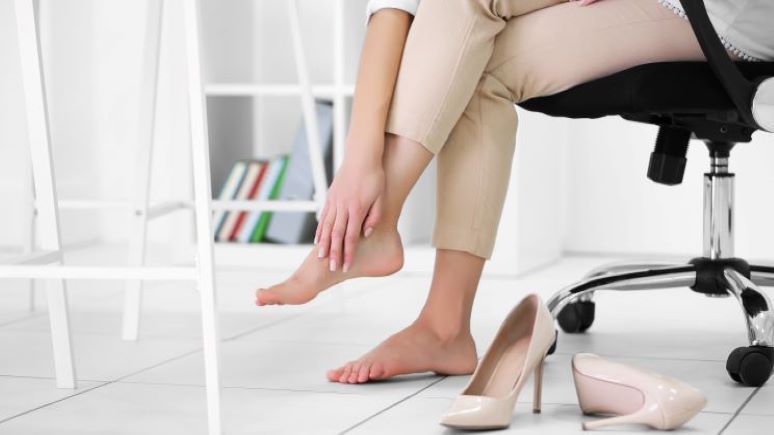Hammertoe and mallet toe are deformities of the foot that most often happen in women wearing shoes with a narrow toe box or those with high heels. These kinds of shoes can force the toes towards or against the front part of the shoe, causing an unnatural bending.
The toes that are most likely to be affected by a hammertoe and mallet toe syndrome are the toes of either foot that lie right next to the big toe. When hammertoe occurs, there is an unnatural bend in the joint in the middle of the toe. Mallet toe is an abnormality in the joint at the far end of the toe.
Reducing the pressure and pain of hammertoe and mallet toe may include changing the types of shoes worn or inserting pads called shoe inserts in footwear. In severe cases of hammertoe or mallet toe, the patient may need surgery to relieve pain.
Hammertoe and mallet toe causes
The following conditions can cause hammertoe and mallet toe:
- Certain types of footwear. Shoes that are too narrow in the toe box or footwear with high heels can prevent your toes from lying flat because there’s not enough room for them. The toes eventually stay in their curled position even when no shoes are worn.
- Injury. A toe that has been jammed, stubbed, or broken is more likely to develop hammertoe and mallet toe.
- Nerve disorders or injuries. Hammertoe and mallet toe occur more often in individuals who have damage to the nerves in the feet. It can occur due to injury or with medical conditions like diabetes or due to a stroke.
Hammertoe and mallet toe risk factors
In addition, there is a group of factors that can increase the risk of developing hammertoe and mallet toe. These can include:
- Your Age. The risk of developing hammertoe and mallet toe goes up as we age.
- Your gender. Most likely due to the type of shoes worn by females, women are at much greater risk of developing hammertoe and mallet toe than males.
- Toe length. People whose second toe is longer than their big toe are at greater risk of developing hammertoe and mallet toe.
Click Here to read about Symptoms.
















Leave a Reply
You must be logged in to post a comment.